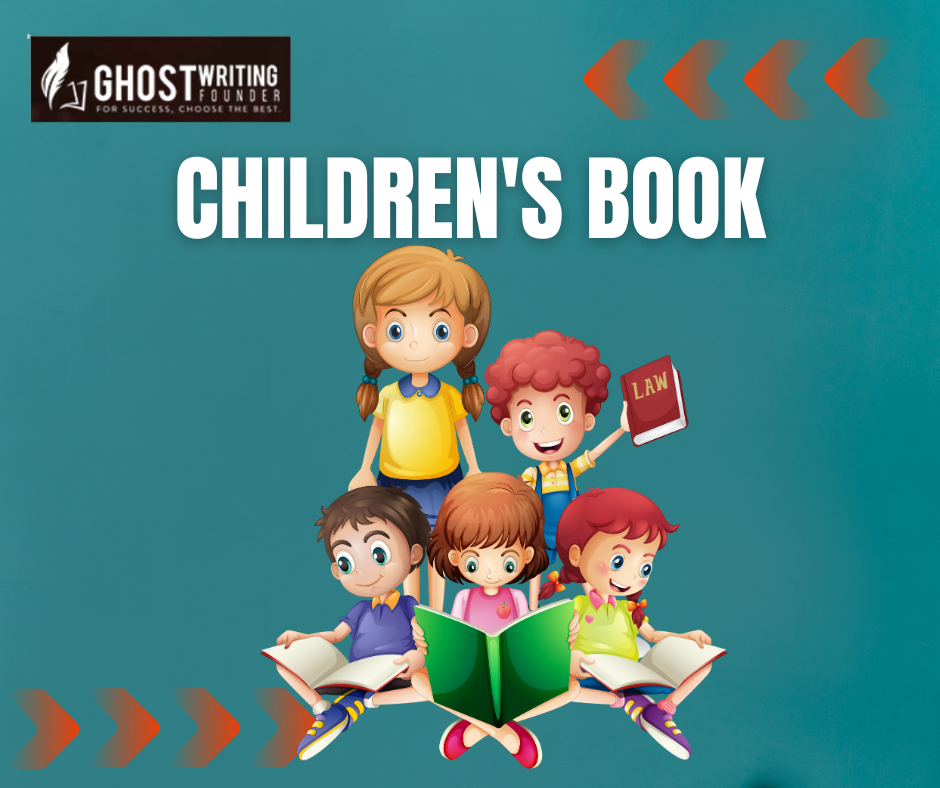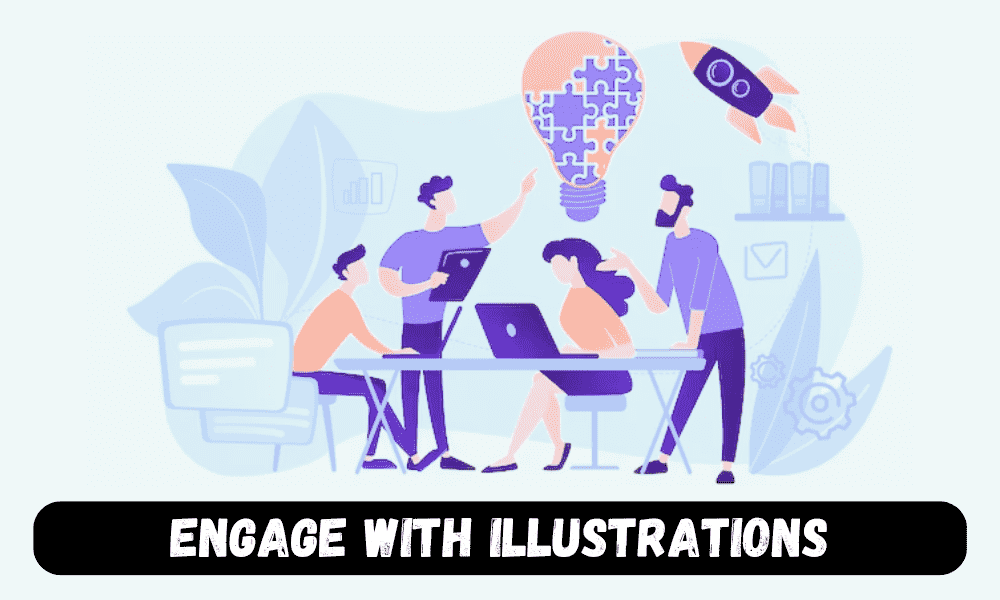
book writing Writing
Every child has a favorite story, one that sticks in their memory for years to come. It might be a story of a magical kingdom, an inspiring character, or a lesson that resonates deeply. And behind every beloved children’s book, an author understood the secret recipe for crafting such stories. So, what makes a captivating children’s book?
Let’s understand the steps, structure, and tips for creating that next delightful read.
Step 1: Understand Your Audience

Every author’s journey begins with understanding their readers, especially when crafting a children’s book. You see, children aren’t just miniature adults; they view the world with fresh eyes, bursting with curiosity. Their minds are a whirlwind of imagination, always eager for a new adventure, yet they have notably shorter attention spans. Because of this unique combination, it’s essential to ensure the book’s content is age-appropriate. Think about the questions they’re currently asking, the games they play, and the dreams they share at bedtime. Get into their world, and ensure your book mirrors the interests, fears, and aspirations specific to that age bracket.
Step 2: Choose A Relatable Theme

Stories are mirrors of our own lives. Kids are no different; they yearn to see reflections of their emotions, challenges, and joys in the storys they read. When selecting a theme or central idea for your book, lean into subjects they can connect with. It could be the joy of making a new friend, the complexities of family relationships, or the thrill of overcoming a daunting challenge. Whatever the theme, it should tug at their heartstrings, igniting genuine feelings and thoughts.
Step 3: Craft Memorable Characters

A story’s heart and pulse often come alive through its characters. They are the conduits through which the narrative flows. And for children, these characters become friends and mentors. Hence, invest time in sculpting them. Whether it’s the courageous main character facing challenges head-on or that amusing sidekick adding humor, each character should be meticulously crafted. Their quirks, dreams, fears, and strengths should be so vivid that children can easily picture them, perhaps even wishing they could jump into the pages and join them on their journey.
Step 4: Maintain A Simple Structure

Simplicity is the foundation of a good children’s book. Children, especially the younger ones, need a story that moves smoothly from one point to another. The classic story arc, consisting of an introduction, a building climax, and a satisfying conclusion, works wonders. Sticking to this tried and true structure ensures that young minds can track the story’s progress, relishing each twist and turn without confusion.
Step 5: Engage With Illustrations

Remember the joy of flipping a book and being greeted by a splash of colors and images? For children, pictures are more than just visual treats. They bridge the gap between words and imagination. Detailed, vibrant illustrations breathe life into the narrative, making each event palpable. Moreover, they aid in comprehension, especially for those just beginning to read. When words might seem tricky, the illustrations clarify, ensuring the story’s essence isn’t lost. It’s a dance between words and images, each complementing the other, making the reading experience rich and fulfilling.
Tips for Writing a Captivating Children’s Book

Consistent Tone
When you pick up a book, it speaks to you, often through its tone. For children, a consistent tone is like a familiar voice telling them a story night after night. Whether you choose to narrate your story with humor, get deep into serious matters, or sprinkle it with whimsy, consistency is crucial. Imagine the confusion if a story starts with light-hearted fun and suddenly turns dark without any buildup. Children need predictability, and a steady tone, like a guiding hand, ensures they stay engrossed from start to finish.
Interactive Elements
Think back to your childhood. The books that stood out had elements that made you an active participant. Rhymes made you anticipate and complete sentences. Songs got you singing along, and puzzles tickled your brain. By adding such interactive elements, you invite children to be more than just passive listeners. They become co-narrators, experiencing the joy of discovery and turning reading into a delightful game.
High Readability
Simplicity is a children’s book writer’s best friend. Long, complex words and convoluted sentence structures might work for adults but can deter young readers. Instead, focus on clarity. Choose words that are easy to understand and construct sentences of varied lengths. This mix ensures the narrative flows smoothly, helping children grasp the story’s essence and develop a love for reading.
Value Addition
Beyond entertainment, a memorable children’s book often carries a message or moral. It subtly teaches while it entertains. Whether it’s the importance of honesty, the value of friendship, or the courage to be oneself, such underlying lessons resonate deeply. They prompt discussions, inspire reflections, and instill values that young minds carry into adulthood.
Feedback
Crafting a story is half the journey. The other half is ensuring it resonates. Before making the final touches, share your story with its intended audience: children. Observe their reactions, listen to their questions, and note the parts where their interest peaks or wanes. Such genuine feedback is gold, providing insights no adult critique can offer.
Professional Help
Getting into children’s literature can sometimes feel like navigating new waters. If doubt creeps in or if you feel something’s amiss, don’t hesitate to seek a guiding hand. Platforms like Ghostwriting Founder specialize in these, offering advice and expertise to transform your story from good to exceptional. You can surely get help from them.
Main Attributes and Elaborate Information
| Aspect of Children’s Book Writing | Strategy and Approach | Key Focus Area |
|---|---|---|
| Understand Your Audience | Focus on age-appropriate content that resonates with children’s curiosity and imagination. | Audience Insight |
| Choose A Relatable Theme | Select themes that reflect children’s emotions, challenges, and joys. | Emotional Connection |
| Craft Memorable Characters | Develop vivid and relatable characters that become friends and mentors to children. | Character Development |
| Maintain A Simple Structure | Use a clear and straightforward story arc for easy comprehension by young minds. | Story Structure |
| Engage With Illustrations | Incorporate vibrant illustrations to enhance understanding and engagement. | Visual Engagement |
| Consistent Tone | Maintain a steady and familiar narrative tone throughout the book. | Narrative Consistency |
| Interactive Elements | Include elements like rhymes and puzzles to make reading an interactive experience. | Reader Engagement |
| High Readability | Use simple language and sentence structures suitable for young readers. | Language Clarity |
| Value Addition | Embed messages or morals that teach and inspire young readers. | Educational Value |
| Feedback | Gather feedback from children to refine and improve the story. | Audience Feedback |
| Professional Help | Seek expert advice for guidance and improvement in children’s literature. | Expertise Utilization |
| Conclusion | Emphasize the importance of creating an immersive and imaginative reading experience. | Storytelling Impact |
Conclusion.
A good children’s book is more than just words on paper. It’s an experience, a journey that a child undertakes with every page they turn. And while there’s no one-size-fits-all formula, understanding the steps and structure, coupled with the right tips, can make the journey smoother.
Remember, the essence of a children’s book lies in its ability to transport young readers to another world, one where dreams soar and imagination runs wild. With the right approach, your book might just become the next favorite bedtime story in countless homes.









Leave a Reply